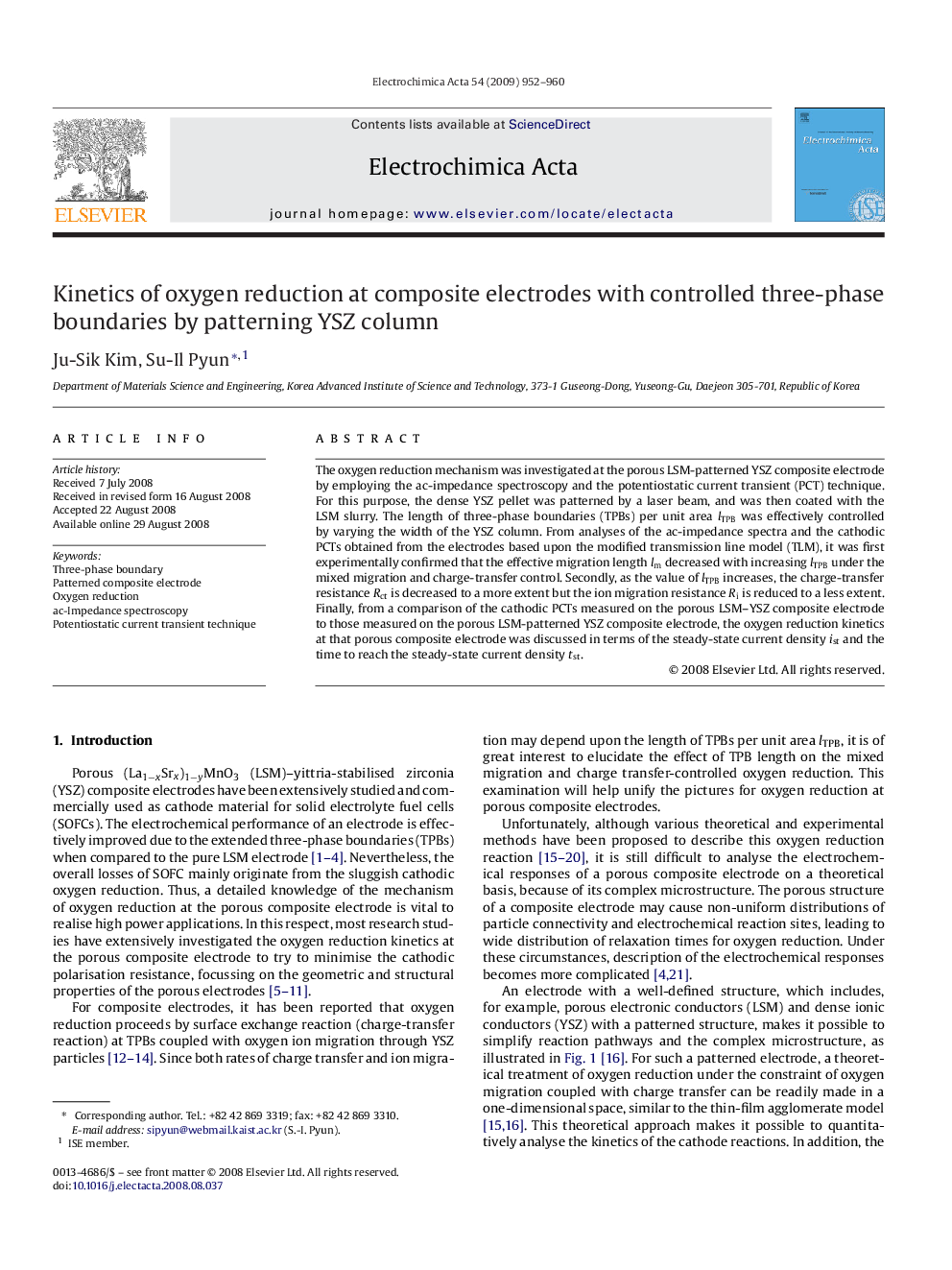| Article ID | Journal | Published Year | Pages | File Type |
|---|---|---|---|---|
| 193920 | Electrochimica Acta | 2009 | 9 Pages |
The oxygen reduction mechanism was investigated at the porous LSM-patterned YSZ composite electrode by employing the ac-impedance spectroscopy and the potentiostatic current transient (PCT) technique. For this purpose, the dense YSZ pellet was patterned by a laser beam, and was then coated with the LSM slurry. The length of three-phase boundaries (TPBs) per unit area lTPB was effectively controlled by varying the width of the YSZ column. From analyses of the ac-impedance spectra and the cathodic PCTs obtained from the electrodes based upon the modified transmission line model (TLM), it was first experimentally confirmed that the effective migration length lm decreased with increasing lTPB under the mixed migration and charge-transfer control. Secondly, as the value of lTPB increases, the charge-transfer resistance Rct is decreased to a more extent but the ion migration resistance Ri is reduced to a less extent. Finally, from a comparison of the cathodic PCTs measured on the porous LSM–YSZ composite electrode to those measured on the porous LSM-patterned YSZ composite electrode, the oxygen reduction kinetics at that porous composite electrode was discussed in terms of the steady-state current density ist and the time to reach the steady-state current density tst.
